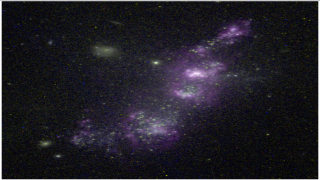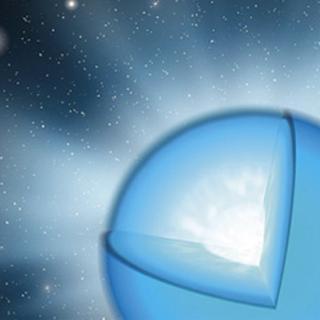Bibcode
Salvador-Solé, E.; Manrique, Alberto; Guzman, Rafael; Rodríguez Espinosa, J. M.; Gallego, Jesús; Herrero, A.; Mas-Hesse, J. Miguel; Marín Franch, Antonio
Bibliographical reference
The Astrophysical Journal, Volume 834, Issue 1, article id. 49, 23 pp. (2017).
Advertised on:
1
2017
Journal
Citations
16
Refereed citations
16
Description
We combine observational data on a dozen independent cosmic properties
at high-z with the information on reionization drawn from the spectra of
distant luminous sources and the cosmic microwave background (CMB) to
constrain the interconnected evolution of galaxies and the intergalactic
medium since the dark ages. The only acceptable solutions are
concentrated in two narrow sets. In one of them reionization proceeds in
two phases: a first one driven by Population III stars, completed at
z∼ 10, and after a short recombination period a second one driven by
normal galaxies, completed at z∼ 6. In the other set both kinds of
sources work in parallel until full reionization at z∼ 6. The best
solution with double reionization gives excellent fits to all the
observed cosmic histories, but the CMB optical depth is 3σ larger
than the recent estimate from the Planck data. Alternatively, the best
solution with single reionization gives less good fits to the observed
star formation rate density and cold gas mass density histories, but the
CMB optical depth is consistent with that estimate. We make several
predictions, testable with future observations, that should discriminate
between the two reionization scenarios. As a byproduct our models
provide a natural explanation to some characteristic features of the
cosmic properties at high-z, as well as to the origin of globular
clusters.
Related projects

Starbursts in Galaxies GEFE
Starsbursts play a key role in the cosmic evolution of galaxies, and thus in the star formation (SF) history of the universe, the production of metals, and the feedback coupling galaxies with the cosmic web. Extreme SF conditions prevail early on during the formation of the first stars and galaxies, therefore, the starburst phenomenon constitutes a
Casiana
Muñoz Tuñón

Physical properties and evolution of Massive Stars
This project aims at the searching, observation and analysis of massive stars in nearby galaxies to provide a solid empirical ground to understand their physical properties as a function of those key parameters that gobern their evolution (i.e. mass, spin, metallicity, mass loss, and binary interaction). Massive stars are central objects to
Sergio
Simón Díaz